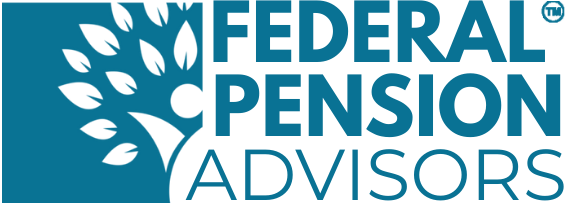You’re not alone; 4,359 federal employees booked their free review.

Trusted Workforce 2.0 Is an Initiative To Modernize Federal Security Vetting
In an effort to modernize and streamline how the federal government manages personnel security, Trusted Workforce 2.0 (TW 2.0) has become one of the most significant reforms in decades. From faster background checks to continuous vetting and clearance portability, TW 2.0 is reshaping how trust is established, maintained, and monitored across millions of federal employees, contractors, and military personnel.
For federal workers and retirees, understanding this initiative is critical not only because it affects security clearances and employment, but also because it may influence long-term career planning and retirement strategies.
The Launch of Trusted Workforce 2.0
When: 2018
Why it matters: Trusted Workforce 2.0 is a cross-government reform effort to overhaul personnel vetting and the security clearance process. It has already introduced major reforms, such as continuous vetting and the replacement of the Standard Form-86, with more to come, including the full implementation of the National Background Investigation Services (NBIS) IT system.
The government’s personnel vetting process was in deep trouble by 2018. The backlog had hit a record 725,000 cases, investigations took hundreds of days, and agencies like OPM were still recovering from the 2015 data breach, where hackers accessed the personal records of 22 million individuals.
Against this backdrop, officials launched Trusted Workforce 2.0 a bold plan to streamline policies, strengthen security, and modernize outdated systems.
Continuous Vetting and the Role of DCSA
The first phase of TW 2.0 focused on reducing the backlog. Thousands of new investigators were hired, but technology also played a central role. The adoption of continuous vetting (CV) replaced the outdated model of periodic reinvestigations every 5–10 years.
CV uses automated, real-time record checks to flag risks such as financial troubles, arrests, or suspicious activities. This proactive model improves security and reduces workload by eliminating redundant reinvestigations.
By 2021, the Department of Defense had fully transitioned to CV, with civilian agencies following. This shift freed investigators to focus on new cases instead of repetitive re-checks.
Additionally, the background investigation mission moved from OPM to the Department of Defense, creating the Defense Counterintelligence and Security Agency (DCSA). Today, DCSA handles about 95% of background investigations across the federal government.
Also read - How Many Paychecks In A Year?
Policy Updates and the SF-86 Revamp
The second phase of TW 2.0, driven by the Biden administration, introduced landmark policy reforms.
- New Guidelines: In 2022, the Performance Accountability Council (PAC) issued the Federal Personnel Vetting Guidelines, creating a simplified three-tier model (low, medium, high) instead of the old five-tier structure.
- Performance Standards: The PAC also established ambitious targets for investigation timelines to cut delays.
- Replacing SF-86: In 2024, OMB approved the new Personnel Vetting Questionnaire (PVQ) to replace SF-86 and other outdated forms.
The PVQ reflects cultural and security updates, including:
- Updated language on marijuana use to reduce disqualification for past use.
- Revised mental health questions to encourage treatment and reduce stigma.
These changes mark a more modern, balanced approach to evaluating trustworthiness while maintaining national security.

NBIS and the Future of Personnel Vetting
Despite progress, challenges remain. DCSA’s backlog has started creeping upward again, and the NBIS IT system designed to centralize vetting data and support clearance portability has been plagued by delays, budget overruns, and limited functionality after eight years in development.
NBIS is seen as the cornerstone of TW 2.0’s long-term success. Once fully operational, it will enable agencies to:
- Access uniform clearance data.
- Share records seamlessly.
- Support clearance reciprocity across agencies.
- Improve mobility for federal employees.
Looking ahead, DCSA plans to integrate AI and analytics to better manage vast amounts of vetting data. These tools will help investigators identify trends and risks more efficiently, though final decisions will remain human-led.
What TW 2.0 Means for Federal Employees
- Faster Onboarding – New hires can start sooner since valid clearances transfer more smoothly.
- Career Mobility – Employees can move across agencies without clearance delays.
- Risk Awareness – Continuous vetting protects careers by flagging risks early.
Retirement Planning – Streamlined recordkeeping and clearance portability can simplify retirement transitions and post-retirement contracting opportunities.
How This Impacts Retirement and Career Planning
Workforce reforms don’t just affect clearances they also shape career timelines and retirement planning. Faster onboarding and clearance portability may open new opportunities for promotions, agency transfers, or extended service.
At Federal Pension Advisors, we help employees plan their retirement strategies in line with these evolving workforce changes. Whether you’re preparing for early retirement, managing service credit, or weighing the impact of career mobility on your pension, our team can guide you through every step.
Stay Ahead With Expert Guidance
At Federal Pension Advisors, we help federal employees and retirees navigate career transitions, financial planning, and benefits optimisation. As personnel policies evolve under TW 2.0, aligning your financial and retirement strategy with these changes is critical.
Schedule a free consultation today and take control of your future with clarity and confidence.
Final Thoughts
Trusted Workforce 2.0 is an initiative to modernize federal personnel vetting, reduce backlogs, and create a more secure, mobile, and efficient workforce. While challenges like NBIS remain, reforms like continuous vetting, clearance portability, and updated policies already represent a major leap forward.
For federal employees, contractors, and retirees, staying informed about these reforms is essential not only for career progression but also for long-term planning.
FAQs
What does the Trusted Workforce 2.0 initiative focus on?
Trusted Workforce 2.0 focuses on modernizing the federal personnel vetting system. It introduces continuous vetting, reduces background investigation backlogs, improves data security, and creates a more streamlined, portable clearance process for federal employees and contractors.
What is the continuous monitoring program for security clearance?
The continuous monitoring (or continuous vetting) program replaces the old periodic reinvestigation model. Instead of reviewing an employee’s background every 5–10 years, it conducts ongoing automated record checks to flag issues such as arrests, financial problems, or foreign activity in real time. This allows agencies to address risks sooner and maintain stronger national security.
Which personal security program protects national security by ensuring individuals granted access to classified information?
The Personnel Security Program is responsible for protecting national security by ensuring only trustworthy and reliable individuals are granted access to classified information. It uses background investigations, continuous vetting, and adjudication standards to evaluate eligibility for access.
Which of the following is required to access classified?
To access classified information, an individual must:
- Hold the appropriate security clearance level (Confidential, Secret, or Top Secret).
- Have a demonstrated need-to-know for the information as part of their official duties.
- Complete required training on safeguarding classified materials.
Both clearance and need-to-know authorization are mandatory clearance alone is not enough.


Get Updated
Subscribe to our weekly updates for the latest on retirement planning, federal benefits, exclusive webinars, and more!
Download Federal Retirement: Step-by-step Checklist
This comprehensive guide will help you understand your federal benefits, optimize your savings, and plan for a comfortable future.



.png)






%20VA%20%26%20Private%20Options%20Explained.jpg)

